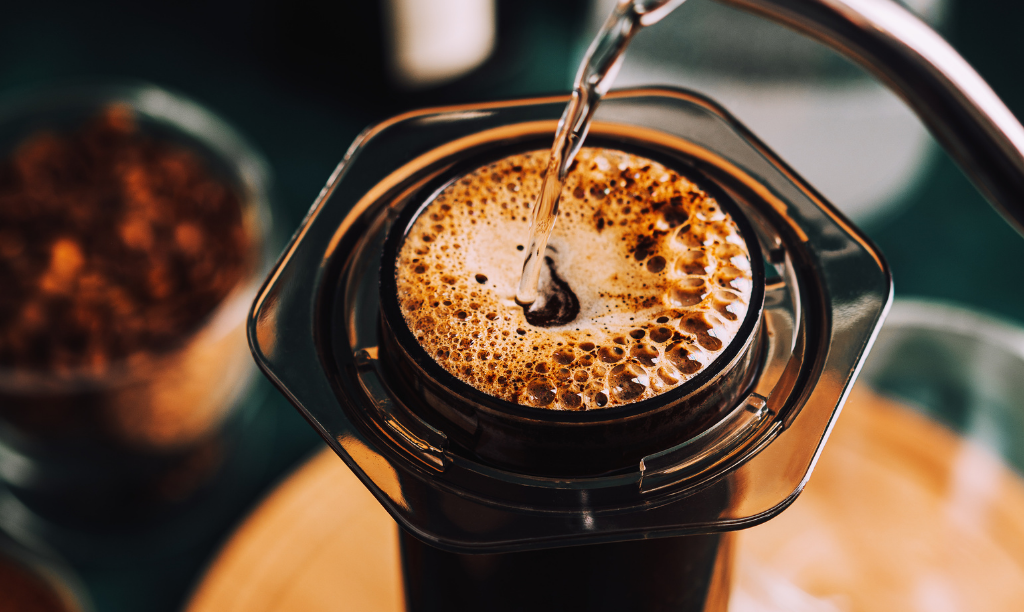The Ultimate Contrast of Popular Coffee Brewing Methods for Home Baristas
The Ultimate Contrast of Popular Coffee Brewing Methods for Home Baristas
Blog Article
The Science Behind Coffee Brewing: Exactly How Temperature Level and Time Affect Your Drink
Recognizing the science behind coffee developing discloses that temperature and time are not plain variables yet critical elements that dictate the beverage's taste account and total high quality. As we check out the subtleties of these aspects, the concern emerges: exactly how can one efficiently balance temperature and time to accomplish that excellent brew?
The Chemistry of Coffee Removal
The chemistry of coffee removal digs into the intricate procedures that change raw coffee beans into the fragrant drink appreciated worldwide. This makeover largely includes the solubility of various compounds existing in the beans, which are influenced by variables such as work size, water high quality, and the developing method utilized.
Throughout the developing procedure, warm water serves as a solvent, drawing out soluble substances, including caffeine, acids, sugars, and lipids, from the coffee grounds. Each compound contributes to the taste account, aroma, and body of the final beverage. For example, acids are accountable for tangy and brilliant notes, while oils add to an abundant mouthfeel.
The initial phases of developing extract acids and sugars, leading to an enjoyable level of acidity, while long term removal can lead to anger due to over-extraction of unwanted substances. Recognizing these chemical communications is critical for optimizing developing methods, as the equilibrium between removal time and water temperature level can significantly affect the general high quality of the coffee.
Ideal Developing Temperatures
Finding the best brewing temperature level is necessary for unlocking the full potential of coffee flavors and aromas - coffee brewing methods. Study indicates that the optimal range for brewing coffee exists in between 195 ° F to 205 ° F(90 ° C to 96 ° C) Within this range, the removal procedure effectively dissolves the preferable soluble substances in coffee beans, resulting in a balanced and flavorful mug
Brewing at reduced temperatures, such as listed below 195 ° F(90 ° C ), might lead to under-extraction, yielding a weak and acidic mixture with low-key flavors. On the other hand, developing at temperature levels exceeding 205 ° F(96 ° C) can result in over-extraction, generating a extreme and bitter taste as a result of the excessive dissolution of undesirable compounds, such as tannins.
In addition, the perfect brewing temperature level can differ depending on the coffee bean kind and roast level. Lighter roasts typically profit from slightly higher temperature levels to improve their intricate flavor accounts, while darker roasts might be much better matched to lower temperatures to minimize anger.
Ultimately, maintaining precision in brewing temperature levels is crucial for attaining an unified equilibrium of flavors, guaranteeing that every cup of coffee provides a rewarding sensory experience.
Effect of Brewing Time
Brewing time plays a critical role in establishing the taste profile and overall high quality of coffee. Shorter developing times can result in under-extraction, leading to a weak visit homepage or sour taste, as not adequate soluble substances are dissolved.
Optimal brewing time varies depending on the method made use of and the grind size of the coffee. For example, a French press typically calls for concerning 4 minutes, while coffee removal is usually finished within 25 to 30 secs. It is vital to adjust developing time in conjunction with other variables, such as water temperature and coffee-to-water proportion, to attain the wanted flavor profile.
Recognizing the impact of developing time makes it possible for coffee lovers to refine their developing strategies, eventually boosting the sensory experience of their mug (coffee brewing methods). With cautious focus to this variable, one can open the full possibility of the coffee, exposing its unique attributes and subtleties
Brewing Approaches and Their Results

For example, approaches like French press and cold mixture permit for a much longer steeping time, causing a fuller body and robust taste as a result of boosted removal of oils and soluble solids. Conversely, coffee brewing utilizes high pressure and a much shorter removal time, generating a focused shot that stresses extreme tastes and a rich crema.
Pour-over strategies, such as Chemex or V60, supply a more regulated extraction procedure, allowing the maker to control flow price and water distribution, which can enhance illumination and clearness. Percolation approaches cycle water via the coffee premises numerous times, leading to a stronger, often bitter taste.
Finally, the usage of paper filters versus steel filters can additionally affect the final taste; paper filters usually produce a cleaner cup by trapping oils and fine bits, while metal filters enable even more oils to travel through, adding to a fuller mouthfeel - coffee brewing methods. Comprehending these subtleties can raise the coffee experience considerably
Tips for Perfecting Your Brew
A well-executed brew can change also the easiest coffee into an exceptional experience. To achieve this, attention to information is vital. Beginning with top notch, fresh baked beans, as their flavor account decreases in time. Grind the beans right before brewing to make best use of freshness, guaranteeing the grind dimension matches your brewing approach-- coarser for French press and finer for coffee.
Water high quality plays a vital role; usage filteringed system water without impurities. The suitable developing temperature ranges in between 195 ° F and 205 ° F(90 ° C to 96 ° C ) As well hot can burn the coffee, while too cool may under-extract flavors.
Timing is equally vital. For immersion approaches, soaking for three to five mins is optimal, whereas drip techniques typically take about five mins. Experiment with mixture times to find your preferred strength.

Conclusion
In summary, the complex connection in between temperature level and time is critical in the coffee brewing procedure. Recognizing these clinical principles equips people to refine their developing strategies, inevitably leading to a much more enjoyable and well i was reading this balanced coffee experience.
Understanding the science behind coffee developing reveals that temperature level and time are not simple variables however critical aspects that determine the beverage's flavor profile and general quality. Comprehending these chemical communications is critical for optimizing developing techniques, as the balance in between removal time and water temperature level can substantially influence the overall quality of the coffee.Developing time plays a pivotal function in establishing the flavor profile and total top quality of coffee. By focusing on these aspects-- bean quality, grind size, water temperature level, soaking time, and ratio-- you can boost your coffee developing process, resulting in a constantly exceptional mug.
In summary, the complex partnership between temperature and time is extremely important in the coffee brewing process.
Report this page